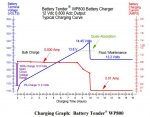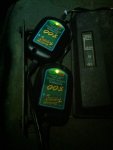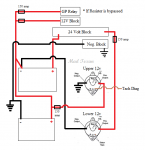- 611
- 15
- 18
- Location
- Boston, MA
I should mention that I'm having my M1010 alternator work done by a professional mechanic who is very familiar with CUCVs and their electrical systems. I understand this stuff well enough to have a healthy respect for how much damage one can do if you wire up big batteries and alternators incorrectly.
If you're not familiar with DC circuitry, you don't want to learn on a CUCV. You want to learn using flashlight batteries, not truck batteries capable of doing serious damage to you and/or your truck.
If you're not familiar with DC circuitry, you don't want to learn on a CUCV. You want to learn using flashlight batteries, not truck batteries capable of doing serious damage to you and/or your truck.









